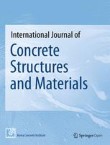Ultra-High-Performance Fiber-Reinforced Concrete (UHPFRC) has been attracted attention from engineers worldwide since the mid-1990s due to its excellent mechanical strengths, durability, fatigue resistance, etc. Based on a particle packing density theory, very compact mix design was developed, having a compressive strength over 150 MPa. By incorporating high volume fractions of steel fibers, ductile strain-hardening behavior in tension could be also achieved with a formation of multiple microcracks. We have indeed witnessed that UHPFRC provides a potential solution to overcome drawbacks of ordinary concrete and leads to innovative construction technology. Recently world faces the dire consequences of climate change. We thus need strategies to reduce the carbon footprint of UHPFRC in terms of sustainability for our future generation. Motivated by these outstanding characteristics, this special issue aims to introduce recent research efforts towards material development of UHPFRC with low embedded carbon and its structural applications.
Short list of topics of interest
- Eco-friendly UHPFRC
- Ultra-high-performance geopolymer concrete
- Supplementary cementitious materials
- Nanomaterials
- Mechanical properties
- Durability
- Sustainability evaluation
- Structural implication
- Strengthening application
Guest editors
- Nemkumar Banthia (The University of British Columbia, Canada, banthia@civil.ubc.ca)
- Eugen Brühwiler (Swiss Federal Institute of Technology in Lausanne (EPFL), Switzerland, eugen.bruehwiler@epfl.ch)
- Doo-Yeol Yoo (Yonsei University, South Korea, dyyoo@yonsei.ac.kr)
Manuscript submissions due
- December 31, 2023
The APC for articles published in the thematic collection will be covered by Korea Concrete Institute.
